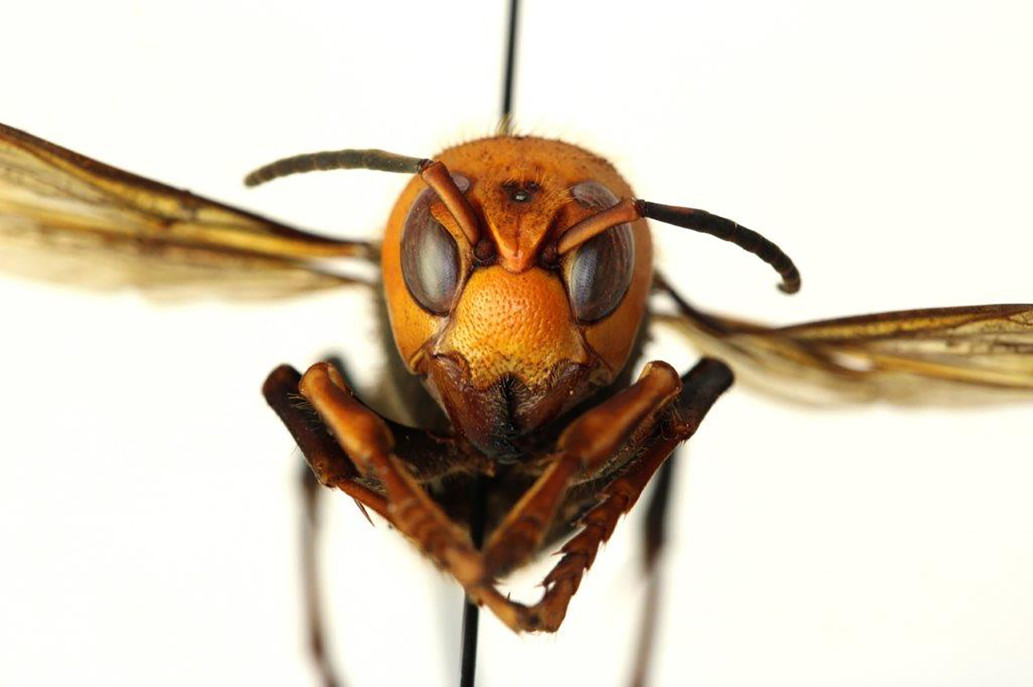Murder hornets have invade the United States on the West Coast, and it’s only a matter of time until they arrive on the East Coast too.
The Asian Giant Hornet is an Asian hornet that can measure up to 2 inches long. They are named “murder hornets” either because they have an extremely powerful sting which kills 40-50 people each year in Japan. Their quarter-inch long stingers can easily puncture beekeeping suits, so the hornets present a real danger. Beekeepers in Washington have seen the hornets devastate their hives.
The aggressive hornets can wipe out bee colonies within hours. If they go in search of food and find bees, they will absolutely destroy an entire colony of honey bees by using their powerful jaws to decapitate the bees. These hornets leave piles of bees in their wake. While Japanese honey bees developed an interesting method of protecting themselves from murder hornets, American bees have not dealt with these attackers before and are very vulnerable to these aggressive predators.
Right now, researchers want to keep the hornets in check. “This is our window to keep it from establishing,” Washington state entomologist Chris Looney. “If we can’t do it in the next couple of years, it probably can’t be done.”
WHAT TO READ NEXT:
- Why would nuclear power be considered clean considering all the waste?
- Could we destroy Jupiter since it is made of hydrogen gas?




Just some brainstormed ideas, maybe one will help:
– Scent traps?
– Something electronic that keys in on the insect size and zaps 1″ and up insects
– Charged pairs of wires 1″ apart: long insects touch both wires and get zapped (but so would clusters of bees?)
– Mesh screens the honeybees can pass but the hornets cannot
– One-way passages like fish weirs, mesh sides or bee-sized openings, that the hornets can get in but not find their way out of